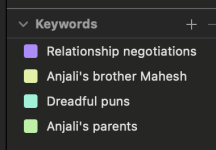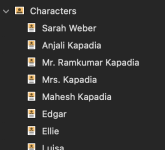Red_Herring4
A Little Fishy
- Joined
- Feb 23, 2023
- Posts
- 70
For those of you who've written a novel-length work, how did you divide it into chapters? Did you outline the major plot points that you wanted each chapter to cover and work from that? Did you just start writing the thing, breaking it into chapters as you went? Did your chapter divisions change after you'd completed a first draft because you now had a clear picture of the whole?
I had a clear vision for the first two chapters, and they are coming out pretty much how I expected. After that, it's a bit more nebulous. I know the broad plot points I want to cover in the story, but I don't know that I want to try to segment them into chapters this far out. I'm planning to just write and figure out what divisions make the most sense as I go. I should mention that I also have a pretty solid idea of where I want to end up in the final chapter, so that should be helpful.
This is my first attempt at a non-erotic novel (my longest story to date is ~21,000 words), so I'm curious how others have tackled chapters.
I had a clear vision for the first two chapters, and they are coming out pretty much how I expected. After that, it's a bit more nebulous. I know the broad plot points I want to cover in the story, but I don't know that I want to try to segment them into chapters this far out. I'm planning to just write and figure out what divisions make the most sense as I go. I should mention that I also have a pretty solid idea of where I want to end up in the final chapter, so that should be helpful.
This is my first attempt at a non-erotic novel (my longest story to date is ~21,000 words), so I'm curious how others have tackled chapters.



